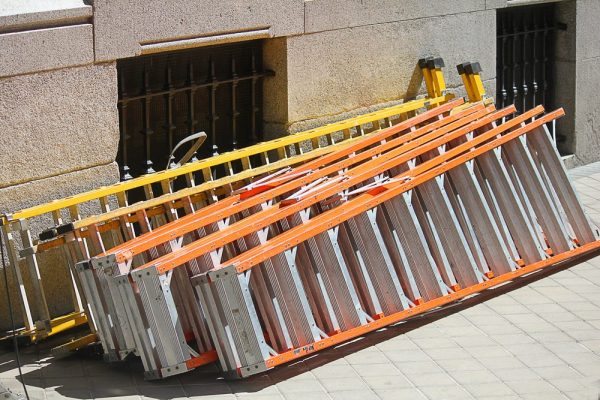According to the U.S. Occupational Safety and Health Administration, ladders were the seventh most frequent safety violation during fiscal year 2016. Often, workers fall from ladders because the equipment wasn’t properly set up for use or it wasn’t inspected to handle the correct loads.
Workers unsure of how to inspect ladders should look over the following best practices:
Using the Correct Ladder
Workers must first ensure they’re using the correct ladder for the situation at hand. When working outdoors, they should use taller stepladders while indoor work environments may necessitate shorter ladders.
As such, workers should examine a work site ahead of time and decide which ladder is suitable. Height is an important factor and so, too, is the ladder’s material and weight load, according to the American Ladder Institute.
Workers should consider these safety questions when deciding what type of ladder to use:
- Are there any obstructions in the path of the climb?
- Will the ladder rest on an uneven surface?
- How crowded is the work area?

Which Weight Load is Suitable?
Workers should consider the Duty Rating of a ladder. This is an indication of its maximum weight capacity, which includes an individual’s weight in addition to the combined weight of personal protective equipment, clothing, the tools a worker is carrying and the supplies stored on a ladder.
The classifications and maximum weight loads are as follows:
- Type III: Light-duty (200 pounds).
- Type II: Medium-duty (225 pounds).
- Type I: Heavy-duty (250 pounds).
- Type IA: Extra-heavy-duty (275 pounds).
Inspecting the Ladder
Before setting up a ladder, workers need to inspect it before use. An inspection will reveal if the ladder is bent, broken or damaged beyond use. If a ladder is broken, workers should avoid making temporary repairs, as those quick fixes may fail while someone is on the ladder.
Setting up a Ladder
While positioning the piece of equipment, make sure a ladder doesn’t come in contact with tree limbs, electrical wires or other obstructions, The Workplace Safety Institute recommended.
Working on a Ladder
Before taking that first step and climbing the ladder, a worker should ensure the soles of his or her shoes are clean to avoid slips. While climbing, stay in the center, securely grip the rails and avoid leaning over to a side. When working on the ladder, avoid overreaching. Instead, an individual should climb back down and readjust as needed.
Ladders may seem like simple pieces of equipment to operate, but workers must follow best practices to reduce severe fall accidents and improve ladder safety.
At Border States Electric, safety is not just a priority, it is a value.
Read more:
GUEST POST: Four Simple Ergonomic Steps to a More Productive Workplace
How Workers Can Protect Their Hands From Disease
What Makes A Strong Safety Assessment?
Load Securement Can’t Be Taken For Granted
Border States Launches E-commerce App
Electrical Safety Month 2016: Raising Awareness
E-commerce offerings:
Ladders
Fall Protection
Material Handling and Storage
Gloves
Ergonomics
Tools
Electrician Tools
Electrical Utility
PPE
Call and let us help meet all of your supply needs (866-483-7289).
Did you know that any customer is eligible for online ordering? All you need to do is fill out this online form.
Key benefits include:
- Order anytime, 24/7, 365 days a year. If you can connect, you can place an order.
- Create custom templates, aka “My Lists.” Reduce search time, click, order, done.
- Track purchase history and view your account information. You can review invoices any time, track purchase history, and print or download records.